Floor heating gas boilers: what are, how to choose and what
If you are thinking about buying (or changing) a gas floor unit for your home or apartment, then there really is something to think about - after all, there are a lot of offers in the shops now. The difficulty lies precisely in this moment - it is far from always clear which particular model, modification and type of product is best chosen in a particular case.
In this article we will examine in detail what kind of floor heating gas boiler is best suited in a given situation, and also consider what they generally are.
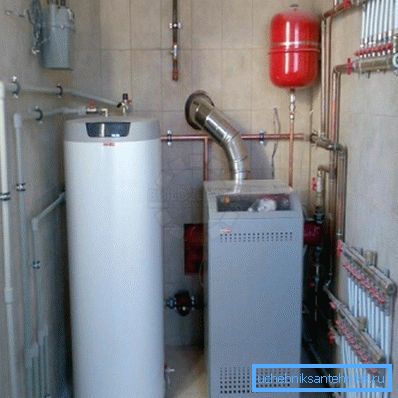
Perhaps, the review should start with the most popular question.
What is better - floor or wall heater
In fact, this is a rather complicated moment, because both options are good in their own way and, of course, have some drawbacks. Therefore, you need to choose here based on the nuances and characteristics of your particular situation.
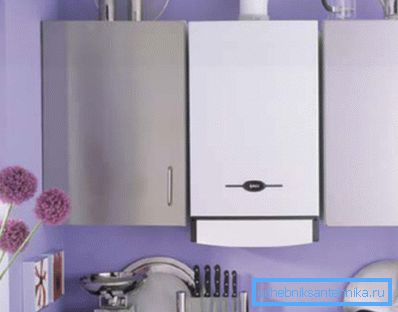
We will provide you with two plates in which the main characteristics of each design will be disassembled.
Let's start with the wall products.
| Benefits: | Disadvantages: |
| Compact units. This quality is possible due to the fact that in almost all models the important components of the system are “packed” into the case. That is, there is no separate expansion tank for heating, connections located at a distance from the housing, etc. Essentially, you get another hinged locker. | Not very high level of reliability. This means that the automation on such devices is quite sensitive to voltage drops, and during such fluctuations the control panel often fails. And the cost of replacing this element sometimes reaches half the cost of the boiler, which, of course, is quite a negative point. agree |
| Enough lightweight product. If the floor gas heating boiler can weigh up to 100 kg, and 200, and sometimes even more, then the mounted counterparts very rarely reach a figure of 90 kg. This is naturally due to the fact that they can’t be done anymore, since rarely are there any walls in the houses will be able to withstand such too much weight. | Despite the fact that the mass of the structure is small - it is still “small” relative to the floor options. The wall unit simply cannot weigh less than 30 kg by default. and in most cases, this figure usually reaches 50. This means that the wall on which the heater will be fixed must have adequate bearing capacity. That is, it turns out that weight is both a virtue and a disadvantage. |
| Almost all models are equipped with a second circuit, which is used to supply hot water to the kitchen, bath. Heating floor gas boilers of the usual configuration do not have this property. | There are certain problems with power - since it is impossible to “hide” massive heat exchangers in a suspended case, one has to be content with relatively compact elements. And this, of course, puts restrictions on the characteristics of power. |
Note! Almost all wall options can work only when there is electricity! It is necessary to ensure the operation of pumps, automation and motors (if the heater is turbocharged). In principle, the instruction manual here provides that if there are interruptions in the power supply, then additional batteries can be installed, from which the automation can work for some time - but this is still a rather inconvenient moment.

To summarize, the solution is suitable for small houses and cottages (up to 100-150 square meters), as well as apartments with a stable supply of electricity. In addition, it is important to have a wall in the right room that will support the weight of the structure.
And we will immediately move on to the plate with the main features that floor gas heating boilers possess, and then we will consider such devices in more detail.
| Benefits: | Disadvantages: |
| It is possible to install the model with any power parameters. That is, simply speaking - this type of heaters can be chosen for absolutely any area of the room. | Installation requires a certain area, which is not always there. In addition, there are rules according to which there should be free space around the heater itself - in order to always have quick access to the case. Yes, additional elements like expansion tanks, pumps also take up space. |
| It is possible to work in conjunction with electric pumps, and without them at all. That is, the heating system in this case can be both forced and natural. And this is very important for those places where electricity is often cut off. | The gas floor heating boiler, in contrast to the turbocharged wall analogues, requires a chimney - and this element in the house is not always there. These are additional expenses, both time and money. |
| Gas floor heating boilers are distinguished by a long service life and a high level of reliability. For example, heaters are still in place in many homes, which are both 20 and 40 years old. It says something, agree - wall units with such a "age" can not be found. | The cost of good options is quite high. And here it is necessary to spend money not only on the heater itself, but also on the pumps, the expansion tank, pipes, fittings, and perhaps also the arrangement of a separate boiler room. But then these boilers are non-volatile, and this is a very powerful selection criterion. |
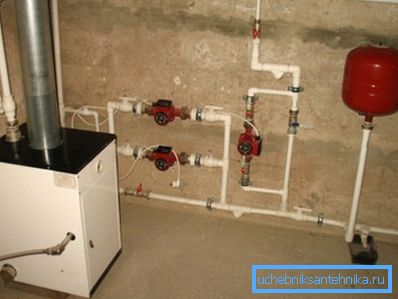
Note! Inexpensive (especially domestic) heaters can make a little noise, which, of course, will bring a certain amount of discomfort to your life. Therefore, be sure to check this point with the seller, and if this fact is taking place, you may have to think about a separate room - the furnace.
In principle, we have dealt with the main differences, now let's consider not less important aspects related to the floor options.
Selection rules
First, probably, it is worthwhile to cover the common and the most elementary moments to which attention should be paid, and only then proceed to more complex things.
So, choosing a floor heating gas boiler, consider the following criteria:
- Reputation of the manufacturer - read the reviews on the Internet for a particular brand, and then make a decision.
- Installation and service conditions. Some stores offer free installation of the entire system, which means you don’t have to do it yourself or hire someone. In addition, the guarantee is important - for how many years it is given and who will be engaged in repair in case of a breakdown - is the service center of your city or will you have to send the parcel to the factory? The last option is extremely inconvenient.
- Unit dimensions and installation location. It is likely that the case may simply simply not fit where you want. Therefore, be sure to take measurements before going to the store.
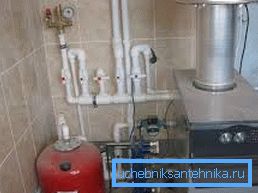
- Product weight It would seem that the difference how much a gas floor heating boiler weighs - but no, it is important. For example, in cases where your floors are made of thin boards and lags that are not designed for such weight, the logs may bend, which would entail the deformation of the whole plane in the room.
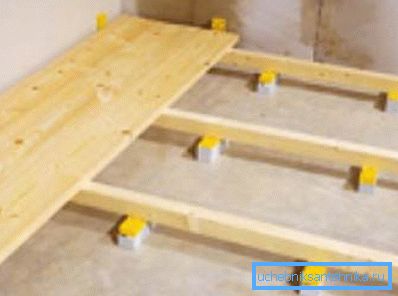
- On how the device is non-volatile.
Well, now touch on the key, detailed points.
Cast iron or steel
The body is almost always made of steel, so in this context we mean what the heat exchanger of the boiler you like is made of.
There are only two options:
- Of steel. Such floor heating gas boilers do not have a very large weight (the minimum possible option is 60 kg.) And a lower price (compared to cast iron). The minus is not a very long service life - the steel grate of the heat exchanger has been working, on average, 10-15 years less than the cast-iron analogs.

- From cast iron. Here the main advantage is the ability to “keep” the accumulated heat for a long time, however there are also disadvantages - it is a lot of weight (such heating gas floor boilers have a mass - at least 115 kg.), As well as the fragility of the heat exchanger - it should be protected from impacts and from sudden drops temperature In addition, the cost of such devices is quite high.

In addition to the above-described metals, there may be products with a copper element, but these are very expensive solutions, in principle, in most cases it is inappropriate to buy them.
Note! Heat exchangers, both steel and cast iron, may consist of sections. This means that with this design - the number of sections can be changed, reduced, added - that is, in a situation with floor heaters, there is an opportunity to adapt as flexibly as possible to the features of the object.

Other important selection criteria
What else I would like to note is that all imported and Russian gas floor heating boilers are divided into two main types:
- On the parapet. These are solutions that have a closed combustion chamber and a side opening for the chimney. In this case, the chimney pipe can be led out straight through the wall horizontally.
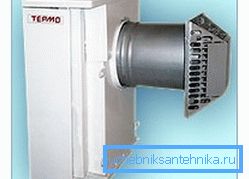
Tip: if you buy parapet devices, then pay attention to the shape of the hole to exit the smoke. It is best to choose the option with a square hole, since it is more resistant to the force of the wind - even at a wind speed of 20 m / s, the fire in the burner will not go out. But the body with a round hole sometimes can not stand and 12 m / s.
- On standard chimney - with an open-type combustion chamber. In this situation, you will have to build a full-fledged vertical chimney through the roof and ceiling.
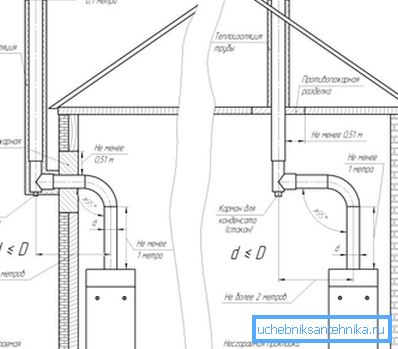
In addition, it is important to take into account the mode in which the unit can operate.
- Single stage control. In fact, these are heaters that operate at the same “speed”, with one power level. Just when the maximum temperature is reached, the device turns off, and when the degrees are lowered, it turns on again.
- Two-stage construction. In principle, this means that there may be two or more power modes. This is very convenient, for example, when you leave home - you can adjust the gas flow rate to maintain the minimum heat.
- Electronic Modulation Solutions. This is the most convenient option, as the temperature setting is very flexible here. But the cost, of course, is not the lowest here.

We will touch on one more thing that will surely arise before you at the moment of choice.
Calculation of the required power
In fact, this process is quite simple and there is nothing “military” here. To calculate the standard project, you can apply the following formula:
MK = S * CMP / 10
- MK is, as you understand, the very value that we need to get - that is, the parameter of the required power.
- S - this is the area of a house or apartment.
- The CMD is a parameter of the specific power of the device, which is set for every ten square meters.
Accepted such indicators CMD:
- For the southern regions of the mainland from 0.7 to 0.9 kW.
- If you live in the middle lane, then your CMP should be 1.0-1.2 kW.
- 1.2-1.5 is a figure for Moscow and the region.
- Well, if your region is north, then the CMB coefficient here will be 1.5-2.0.
That is, if we take a house of 100 sq. M. As an illustrative example. meters, which is built in the middle lane, you will need to do so:
- 100 multiplied by 1.0 - we get 100.
- The number 100 is divided by 10 = 10.
This means that in this case a heating unit with a power of 10 kW is required.
Note! This formula is valid for most situations where the walls of the house and floors have a standard heat loss. If you are very bad in this respect, you will have to buy a heater with more power, as if with a margin. However, here you need to think carefully - it may be more profitable to warm the walls, and then save on gas.
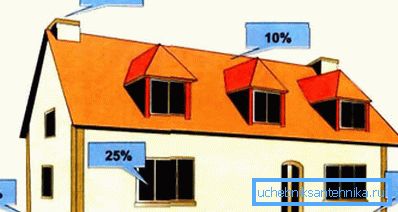
Now let's try to figure out what brands of products to buy - that is, consider specific brands.
The most popular and reliable companies
If we talk about the legendary German quality, then, first of all, it is worth highlighting such a flagship as “Bosch”.
Units of this brand are distinguished by such qualities:
- High level of efficiency, which is usually 92-94%.
- Reliability of the heat exchanger and all connections as well as parts.
- Long warranty. At the same time there are no problems with the service centers - the company is so serious that its branches, as a rule, are in any regional center.
Of the minuses, in this case, it is possible to distinguish only the rather high price of the goods.
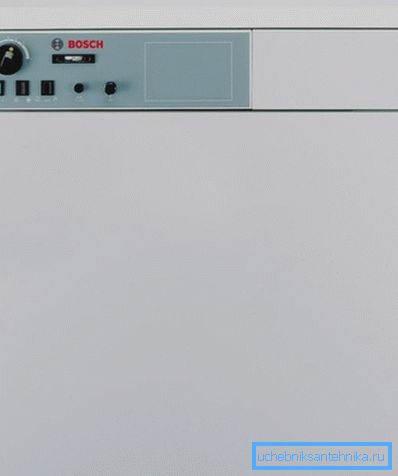
No less interesting are the goods under the brand name “Baxi” - this is a very high-quality “product” of Italian engineers. Products are adapted to the conditions of operation in Russia, so they serve for a long time and usually without problems. Minor breakdowns occur, but mostly this applies to those models that have electronic automatics - the control panel simply simply burns due to voltage drops in our network.
In principle, there is a way out - the “Baxi” heater (and any other with automation) can be connected to a voltage regulator and then the risk of such a breakdown will practically disappear.
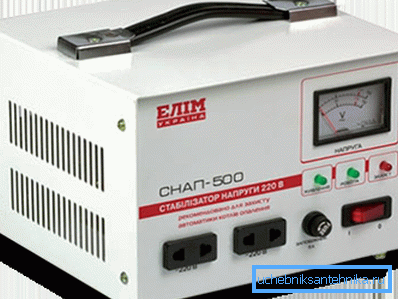
It turns out that Germany and Italy are in some sense the flagships of good solutions, but the goods of these countries cost accordingly, that is, not cheap.
Therefore, it may be worthwhile to pay attention to cheaper European brands like the company Proterm.
These are inexpensive offers of the Czech Republic, which have a number of interesting features:
- Electric ignition;
- Two-stage control system.
- The possibility of functioning complete with a boiler to ensure hot water.
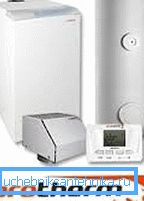
What is remarkable - the majority of products of this brand can work not only from gas, but also from liquid fuel.
In general, the above brands can be trusted precisely.
As for Russian-made goods, heaters of fairly good quality are now being assembled, with a variety of parameters and functions. So if you have a small budget, there is no desire to overpay, and there are no special requirements for the system, then this is a worthy purchase option.
This concludes the article and summarize.
Conclusion
In this review we understand what good and bad floor heaters, as well as considered all the criteria for their choice. In addition, we touched several specific brands.
We hope that now it will be much easier to make a purchasing decision. If you want to know even more, then additional information is in the video, which is located at the bottom of this article.